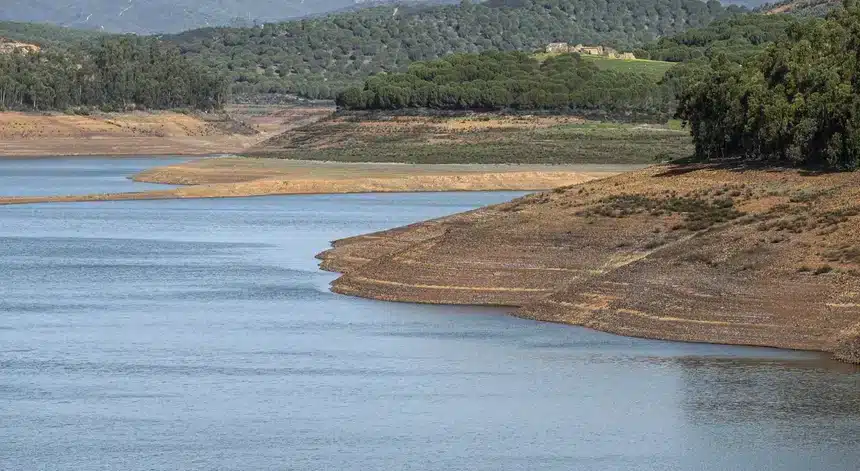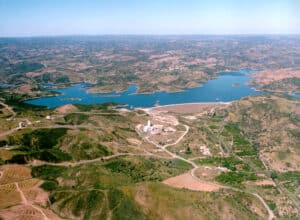But will make water “a lot more expensive for farmers”
A study proposes the construction of a desalination plant in the town of Odemira to supply the river Mira Irrigation Perimeter, with a capacity for 25 million cubic meters of water per year, at an investment of €200 million.
Luís Mesquita, president of the Association of Horticulturists, Fruit Growers and Flower Growers of the Odemira and Aljezur districts (AHSA), told Lusa that the association commissioned “a preliminary study” from “an Israeli company” specializing in the area with a view to building a desalination plant.
The study looked at three scenarios: the Vicentina coast, with a desalination plant right on the coast (close to the intensive agriculture has been draining water from the Santa Clara dam for over a decade), a second scenario in Sines (Setúbal district) and a third inland in the borough of Odemira, “so as not to clash with the Southwest Alentejo and Vicentine Coast Natural Park (PNSACV)”.
According to Mesquita, the study, due to be completed “later this week”, also carried out a survey of the “investment and water cost calculations” associated with the different locations.
“The one that has a slightly higher cost is the one that escapes the PNSACV because it has pipes and conduits a few kilometers inland,” he said.
However, “it is the one that seems most feasible to us because it’s the one that will be accepted most easily and quickly by the various bodies that have to give their opinion.”
“What’s on the table is the possibility of using this desalination plant not only to solve the problem of the lack of water in the river Mira, but also in the Bravura dam,” (which serves Lagos and is at below death-level capacity) he added.
Mesquita said he expects the €200 million investment to be made by “a company or a consortium” of companies, through the launch of a public tender.
He estimated the project would require “a year” to secure “all the licenses” and another “three and a half years for the construction” of the plant.
“The first impression we have, from the contacts we have been receiving, is that there is a relatively large appetite on the part of companies specialising in this area to make the investment.”
The project, he explained, points to “a unique installation, which can be modeled”, thus making it possible to “increase (its) capacity” and solve “the problem of the Mira perimeter, resulting from the progressive lowering of water levels in the Santa Clara dam”, but also the (the problem of the) “filling of the Bravura dam”.
Mesquita did warn however that the planned investment of €200 million does not include the connection to the Bravura dam. This discussion “is very recent” and there is “still no exact figure” on what it might cost (or more to the point, what more it might cost).
As for the price of water coming from desalination, he said “it is going to be a lot more expensive than the water that is available today” for farmers. But, he said, “on the other hand, it is guaranteed water; life insurance for the coming years, with no limitations“.
With the construction of the desalination plant, “potentially the irrigated area” of the Mira Irrigation Perimeter “could increase”, Mesquita added (meaning further greenhouses/ intensive agriculture could come, if producers can afford the costs of the water…)
“The Mira Irrigation Perimeter has 12,000 hectares, but only 6,000 are irrigated, because at the moment there is not enough water for more. As soon as there is more water available and there are investors in crops who can pay for this water at this price, there is no reason why a larger area of this perimeter should not be used,” said the AHSA president.
For now, there is no further details on the study undertaken, no explanation, for exampe, of how much toxic brine the plant will produce and where that brine will be ‘recycled’/ deposited. ND
Source material: LUSA


























